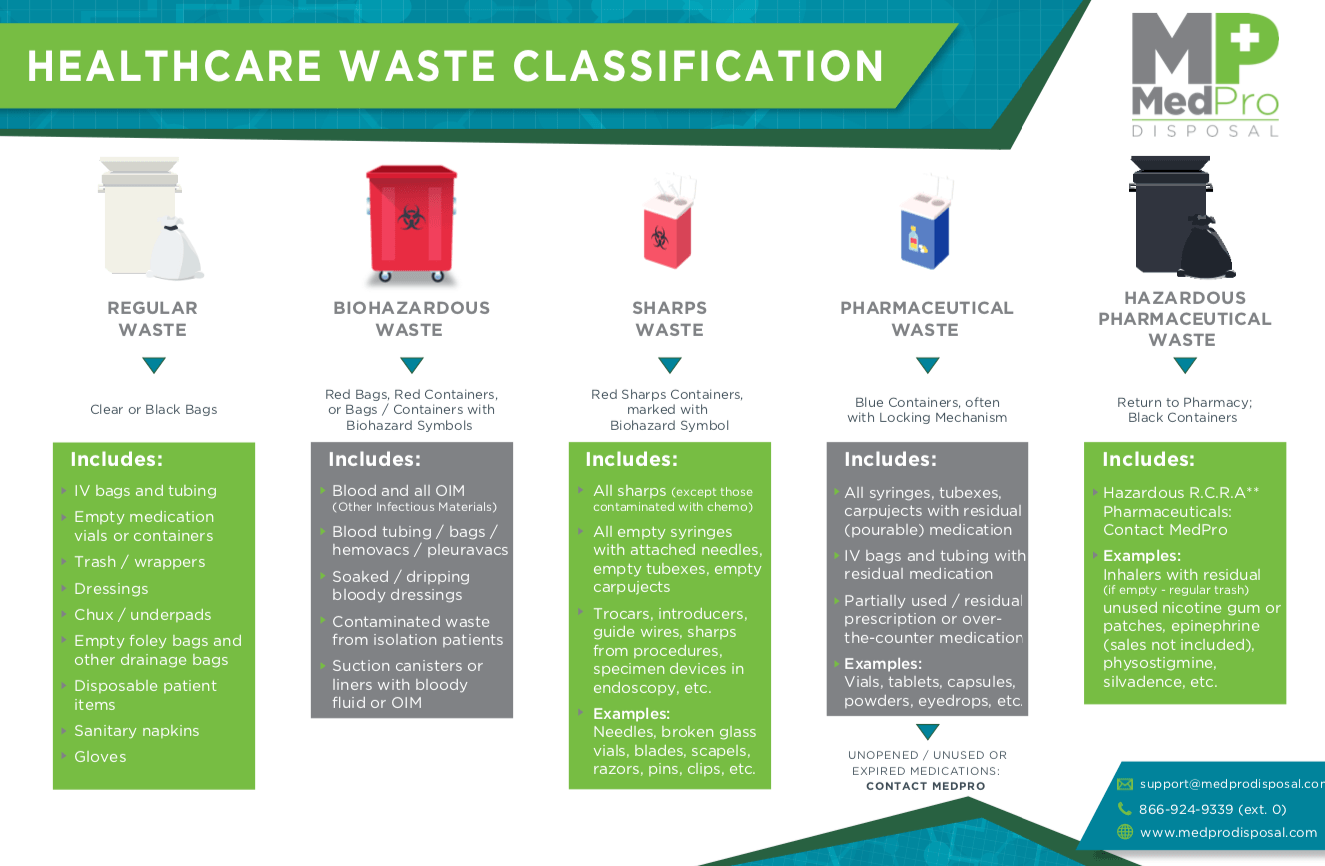Browsing Safety And Security: The Essential Overview to Medical Waste Disposal Ideal Practices
Browsing Safety And Security: The Essential Overview to Medical Waste Disposal Ideal Practices
Blog Article
Understanding the Various Kinds of Garbage Disposal Methods
In the realm of waste administration, the range of disposal methods available today is large and varied, each approach serving a distinct purpose in attending to the obstacle of waste disposal. click here. From reusing techniques that intend to offer new life to materials, to the detailed processes of contaminated materials administration, the landscape of waste disposal is intricate yet critical for environmental sustainability. Recognizing the nuances of these various techniques not just clarifies the value of responsible waste monitoring but additionally triggers us to reassess our strategy in the direction of garbage disposal in a rapidly progressing world

Recycling Approaches
Reusing methods are vital for lasting waste administration methods in both industrial and residential settings. medical waste disposal. By applying effective recycling strategies, a substantial amount of waste can be diverted from land fills, saving natural resources and lowering the environmental impact of production processes
In houses, curbside recycling programs play an essential duty in encouraging homes to different recyclable materials from basic waste. Materials such as paper, plastics, glass, and steels can be arranged and gathered for handling right into brand-new items, minimizing the need for basic materials and energy-intensive manufacturing processes.
Industrial centers also rely upon reusing techniques to minimize waste generation and advertise a circular economic climate. By implementing closed-loop systems, services can recycle materials within their manufacturing procedures, reducing expenses and environmental impact. medical waste removal. In addition, industrial recycling programs typically entail partnerships with specialized reusing facilities to make sure that materials are appropriately sorted, processed, and rehabilitated right into the supply chain
Composting Methods

Oxygenated fixed heap composting involves mixing natural waste products in a huge stack and on a regular basis transforming it to guarantee appropriate oygenation. This method is efficient for massive composting operations. On the other hand, vermicomposting makes use of earthworms to damage down organic matter right into nutrient-rich castings. This technique is well-suited for smaller-scale operations and houses.
In-vessel composting includes placing organic waste in a shut container with controlled conditions for temperature level and aeration. This method is effective for taking care of food waste in city locations. Last but not least, windrow composting consists of developing long rows of natural waste and frequently turning them to advertise disintegration. This strategy is commonly used in agricultural setups.
Landfill Disposal
Garbage dump disposal is a commonly used technique for taking care of waste that can not be reused or composted. It includes burying waste in assigned locations of land, with proper safety measures to avoid ecological contamination. Garbage dumps are crafted facilities made to isolate waste from the surrounding atmosphere. The waste is compressed and covered with dirt daily to decrease smells, discourage parasites, and decrease the spread of clutter. Modern land fills are outfitted with safety liners and monitoring systems to avoid leakage of unsafe materials into the soil and groundwater. Methane gas, a result of breaking down organic waste in landfills, is commonly accumulated and made use of as a source of eco-friendly power. In spite of advancements in land fill innovation, issues stay about the long-lasting ecological effects, such as groundwater contamination and greenhouse gas emissions. Initiatives to lower reliance on land fills consist of promoting waste decrease, recycling, and discovering alternate garbage disposal approaches to reduce the environmental impact connected with conventional land fill disposal practices.

Waste-to-Energy Incineration
Incineration of waste for power generation is an approach progressively being considered as an option to traditional land fill disposal methods. Waste-to-energy incineration includes the burning of waste products at heats, typically in specialized facilities developed to create power or warm via the process - click here. This strategy not just lowers the quantity of waste that would certainly or else be predestined for garbage dumps however additionally utilizes the warmth generated throughout incineration to create power
Among the vital benefits of waste-to-energy incineration is its capacity to create electrical power while decreasing the ecological effect compared to conventional land fill disposal methods. By transforming waste right into power, this strategy aids in lowering greenhouse gas emissions and reliance on nonrenewable fuel sources for energy generation. Furthermore, waste-to-energy centers are outfitted with innovative air pollution control modern technologies to reduce prospective toxic wastes launched throughout the burning process.
Contaminated Materials Administration
.jpg)
Taking into consideration the vital importance of liable waste monitoring techniques, particularly in the world of environmental sustainability, the emphasis now moves towards the elaborate domain use this link of Hazardous Waste Management. Dangerous waste presents considerable threats to both human health and wellness and the setting, necessitating specific handling and disposal techniques. Common examples of contaminated materials consist of chemicals, batteries, pesticides, and electronic waste.
Harmful Waste Management involves the identification, collection, transportation, therapy, and disposal of products considered potentially hazardous or unsafe. This process needs adherence to stringent guidelines and standards to mitigate negative influence on environments and public health. Various methods are utilized in managing contaminated materials, consisting of recycling, safe land fills, encapsulation, and chemical therapy.
Correct Contaminated Materials Management is important for preventing contamination of soil, water sources, and air contamination. It is necessary for industries, research laboratories, medical care centers, and other generators of contaminated materials to carry out durable management techniques, training programs, and emergency situation feedback prepares to make certain the secure handling and disposal of these products. Failure to manage contaminated materials properly can have significant effects, underscoring the relevance of diligent and liable techniques in this area.
Verdict
In conclusion, waste disposal techniques play an essential role in handling and minimizing the influence of waste on the environment. From reusing and composting to land fill disposal and waste-to-energy incineration, each method has its own benefits and restrictions. Appropriate management of hazardous waste is additionally necessary to secure public wellness and the environment. It is important for people and sectors to understand the various waste disposal strategies available and select the most suitable approach for sustainable waste management.
In the realm of waste monitoring, the range of disposal strategies offered today is vast and differed, each technique offering an unique purpose in addressing the challenge of waste disposal. click here. From reusing methods that aim to provide brand-new life to products, to the intricate procedures of hazardous waste management, the landscape of waste disposal is complicated yet essential for environmental sustainability. Understanding the nuances of these different techniques not only loses light on the value of liable waste management but likewise triggers us to reassess our method in the direction of waste disposal in a rapidly evolving globe
Initiatives to minimize dependence on garbage dumps consist of promoting waste reduction, reusing, and discovering alternate waste disposal methods to minimize the ecological footprint linked with standard land fill disposal methods.
It is essential for industries and people to understand the various waste disposal methods offered and select the most appropriate approach for lasting waste administration.
Report this page